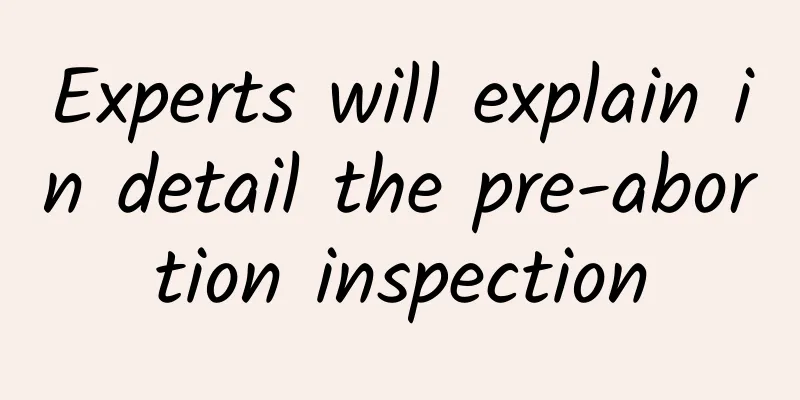What does threatened miscarriage mean?

|
Everyone knows that there are many ways of miscarriage. After many people go to the hospital for examination, the doctor diagnoses them as threatened miscarriage. But many people still ask what threatened miscarriage means. In order to let more people understand what threatened miscarriage is, here is some basic knowledge about threatened miscarriage. Any symptoms such as abdominal pain, vaginal bleeding, and cervical dilation that occur within 28 weeks of pregnancy is called threatened abortion, within 12 weeks of pregnancy is called early threatened abortion, and after that is called late threatened abortion. Generally, the main symptom of threatened abortion is a small amount of vaginal bleeding after pregnancy. Depending on the amount of bleeding and the time it accumulates in the vagina, the color can be bright red, pink or dark brown. Sometimes it is accompanied by mild lower abdominal pain, a feeling of falling when the fetus moves, backache and abdominal distension. There are many reasons for threatened abortion, the main reason is embryo abnormality caused by genetic factors. If this abnormally developed fetus is born at full term, it will also be deformed or abnormal. In addition, insufficient oxygen supply to the umbilical cord and amniotic fluid disease are also one of the causes of threatened abortion. If the pregnant woman is emotionally unstable or malnourished during pregnancy, it can also cause abortion. Other reasons such as insufficient oxygen supply to the umbilical cord, amniotic fluid disease, placental virus infection and certain gynecological inflammation can also cause miscarriage. Malnutrition of pregnant women is also one of the causes of miscarriage. Some pregnant women have severe nausea and vomiting in the early stages of pregnancy, resulting in extreme nutritional deficiency, which has a great impact on the development of the embryo and is also prone to miscarriage. Gynecological examination can reveal that the cervix is not open, the size of the uterus is consistent with the number of weeks of amenorrhea, and no pregnancy products are discharged. After bed rest and related pregnancy-preserving treatment, the clinical symptoms disappear and the pregnancy can continue. If symptoms such as vaginal bleeding, abdominal pain or backache continue to worsen, it may further develop into inevitable miscarriage. About half of the patients with threatened abortion will have miscarriage. Excessive bleeding may lead to infection, or even sepsis and death. Therefore, if you have symptoms of threatened abortion, you must go to the hospital for examination in time. Especially if you have vaginal bleeding in the first 3 months of pregnancy, you should go to the hospital for examination as soon as possible, and do not try to keep the baby at home. |
<<: What are the methods for detecting threatened abortion?
>>: What are the dangers of threatened abortion to women?
Recommend
What are the ways to prevent Bartholinitis?
The Bartholin's glands are located at the bac...
The best treatment for adenomyosis
There is currently no single best treatment for a...
What to eat after a miscarriage? Ensure high-quality protein
After a miscarriage, the harm to the female body ...
What are the symptoms of uterine fibroids? Can uterine fibroids lead to endometrial cancer?
If uterine fibroids develop to a certain extent, ...
What does uterine fibroid calcification mean? What is uterine fibroid calcification?
Uterine fibroids are a common benign tumor in gyn...
Don’t worry about gaining weight in middle age! Lose weight correctly to restore your slim waist
After women enter menopause, their metabolism gra...
The easiest way to delay your period
There is no one-size-fits-all answer to the simpl...
Parents should pay more attention to infant vaginitis!
Parents have all heard of infant vaginitis . But ...
What are the specific causes of ectopic pregnancy in women?
What are the specific causes of ectopic pregnancy...
When is the best time to consume carbohydrates and protein while running? 5 sports nutrition tips you should know
The first Wednesday of June every year is World R...
Key points for diagnosis of functional uterine bleeding
Dysfunctional uterine bleeding generally does not...
Is it serious to have abnormal leucorrhea and smelly water?
Abnormal leucorrhea with foul odor may be a sign ...
Enterprise weight loss tips Chunghwa Telecom stair climbing card registration
The National Health Administration promotes healt...
Drinking cold drinks + turning on the air conditioner = reducing the weight of the enemy! Young woman gained 4 kg
Will drinking sugary cold drinks and turning on t...
What are the symptoms of irregular menstruation?
What are the symptoms of irregular menstruation? ...









